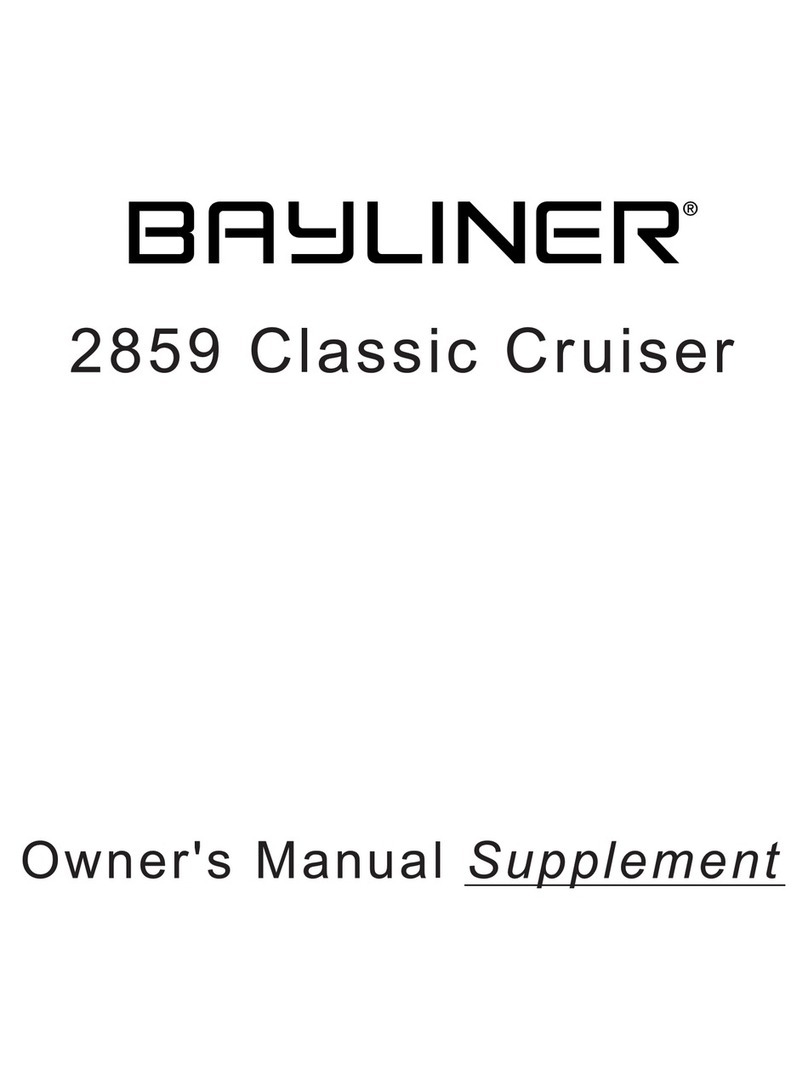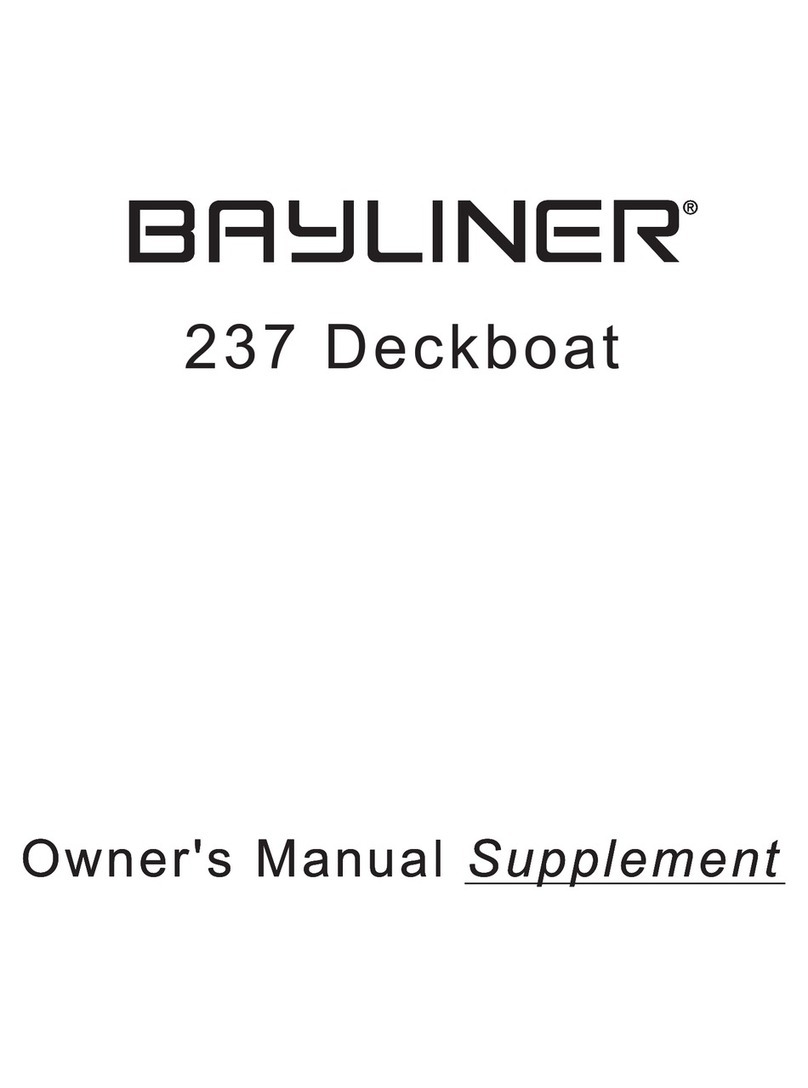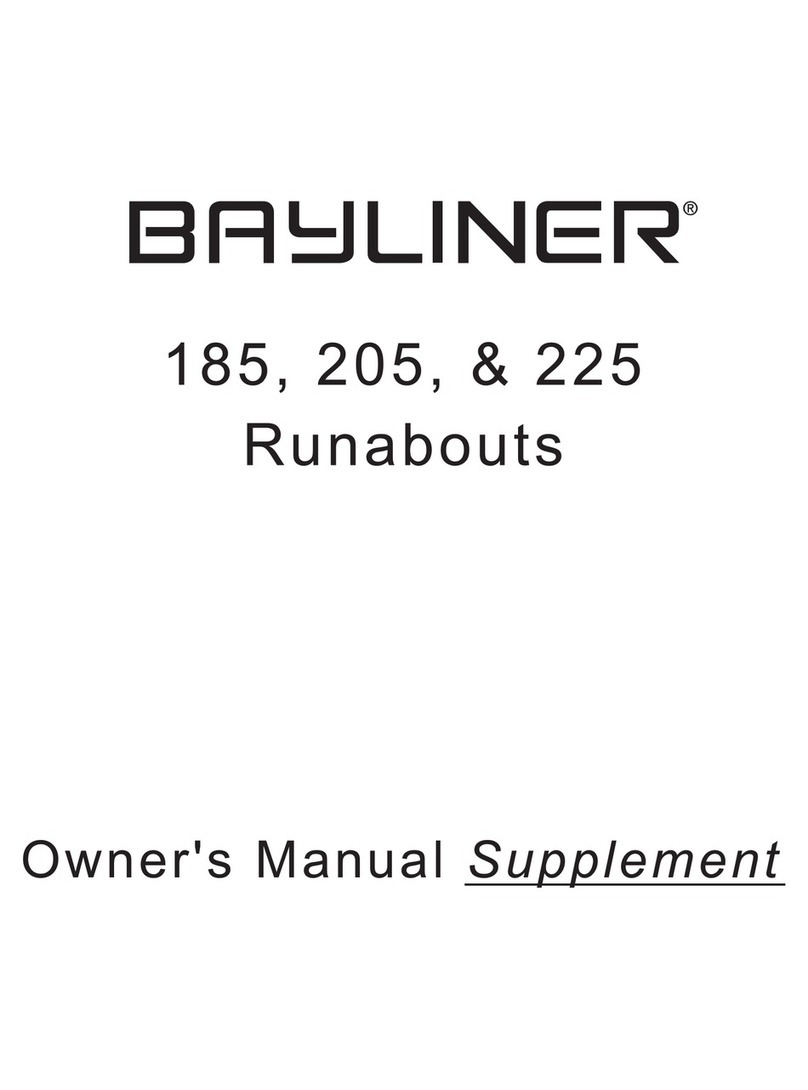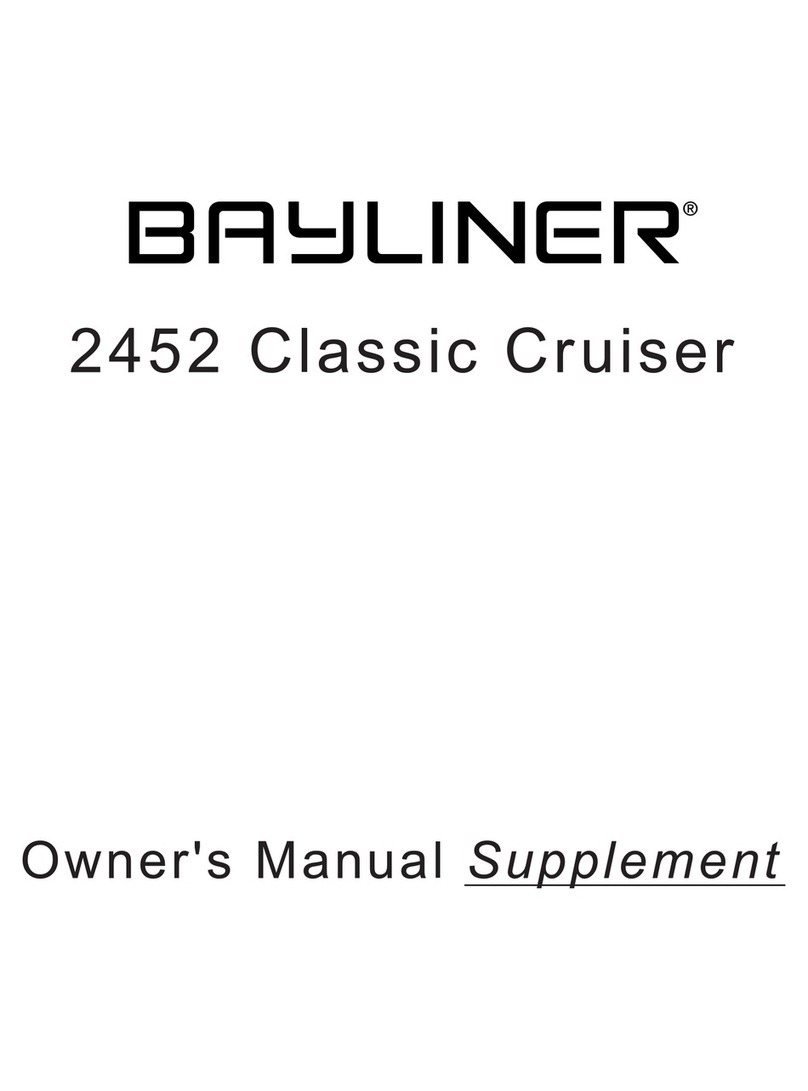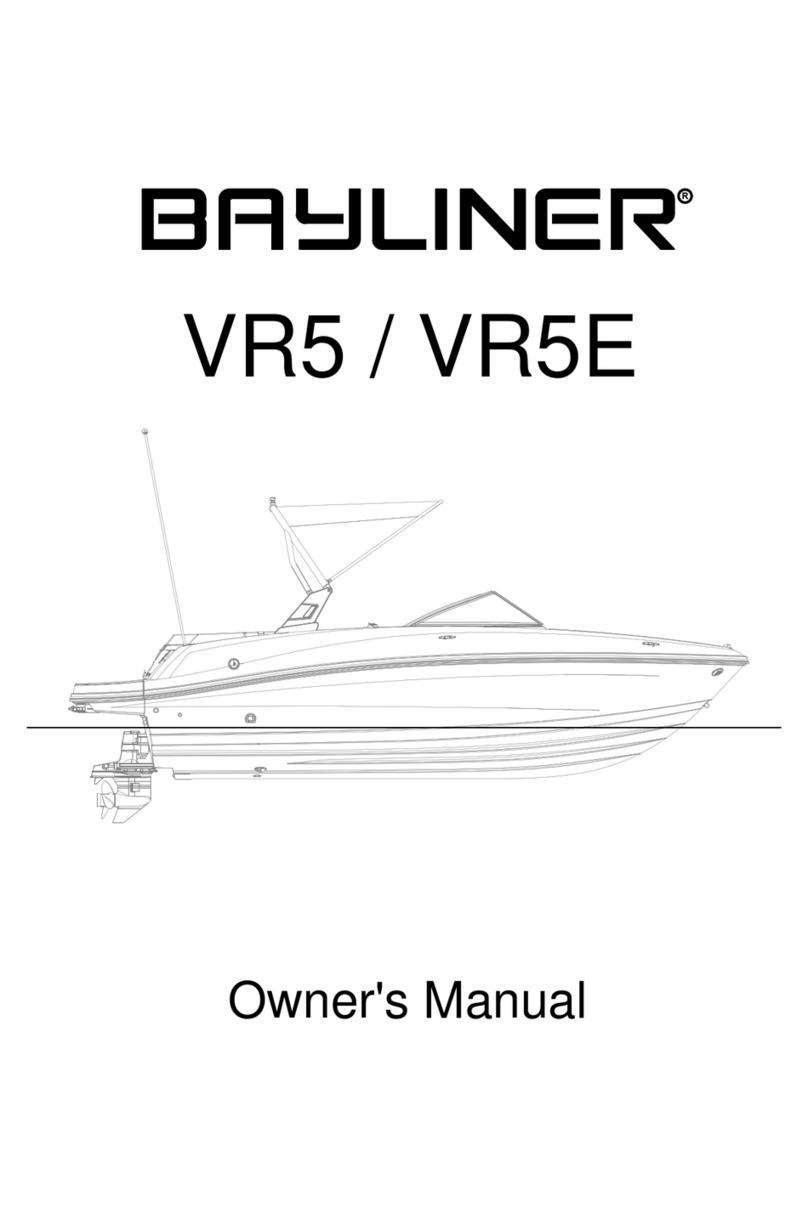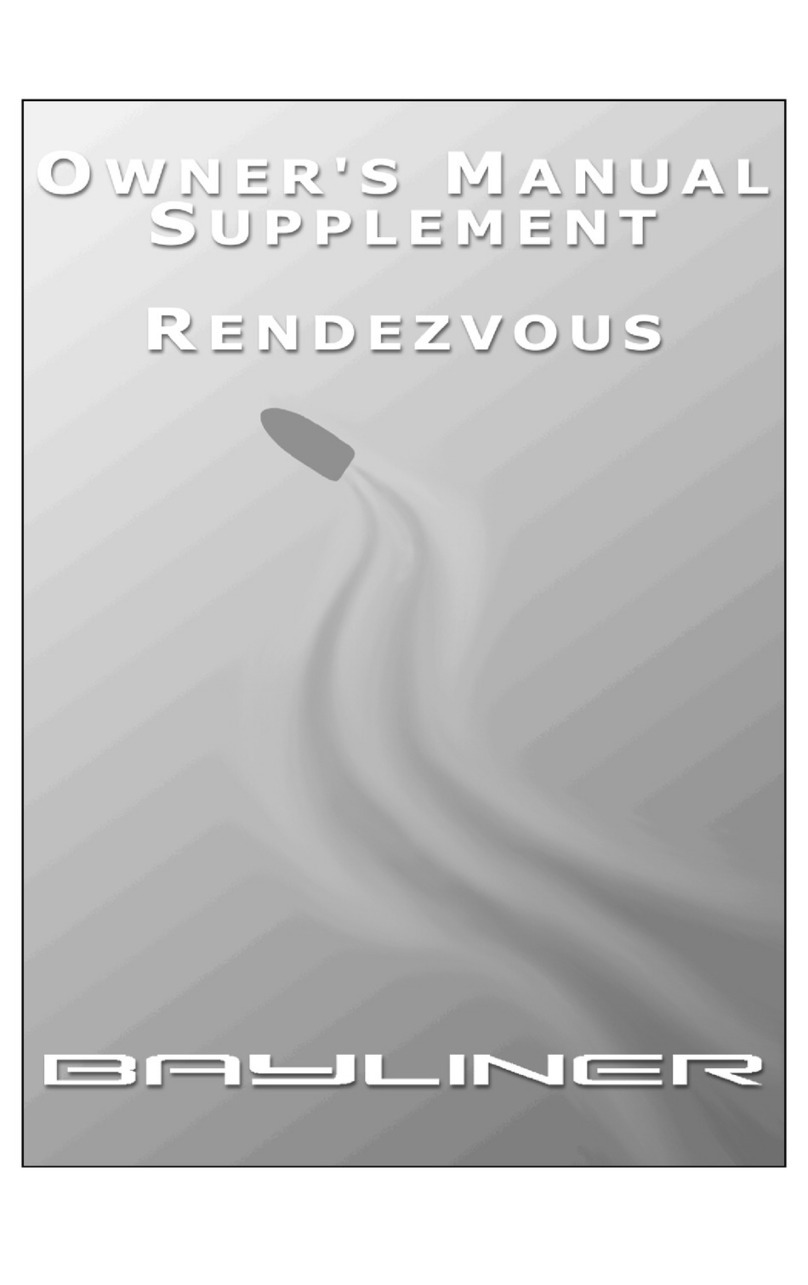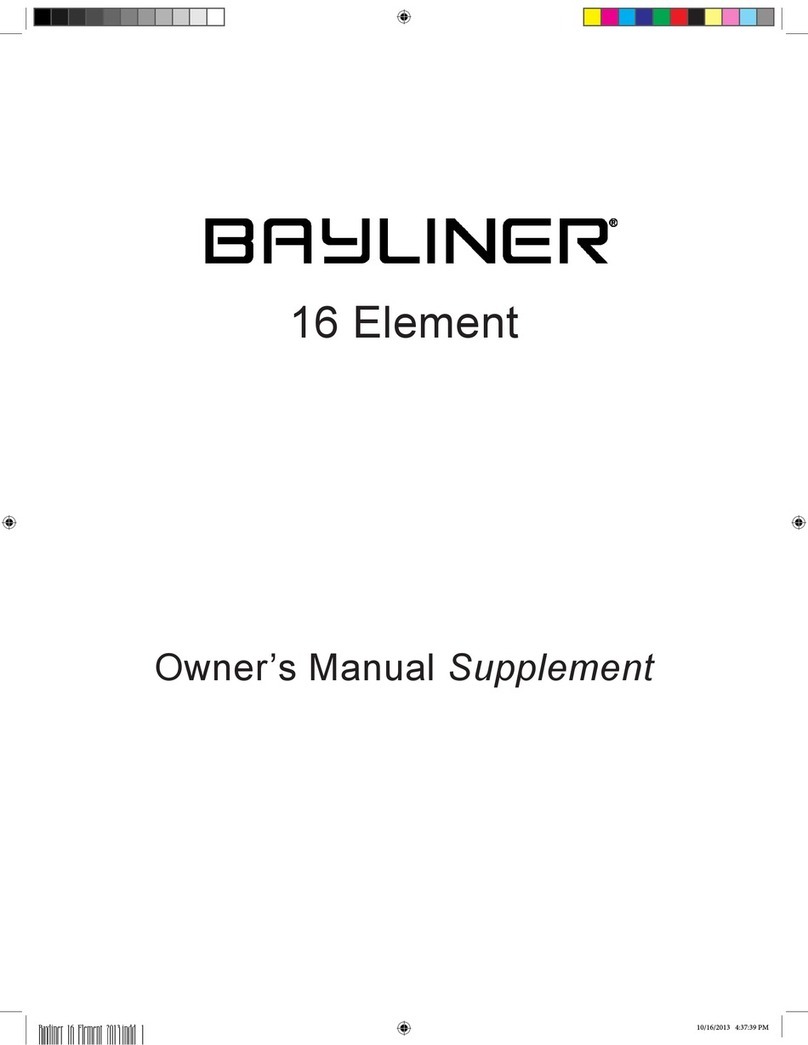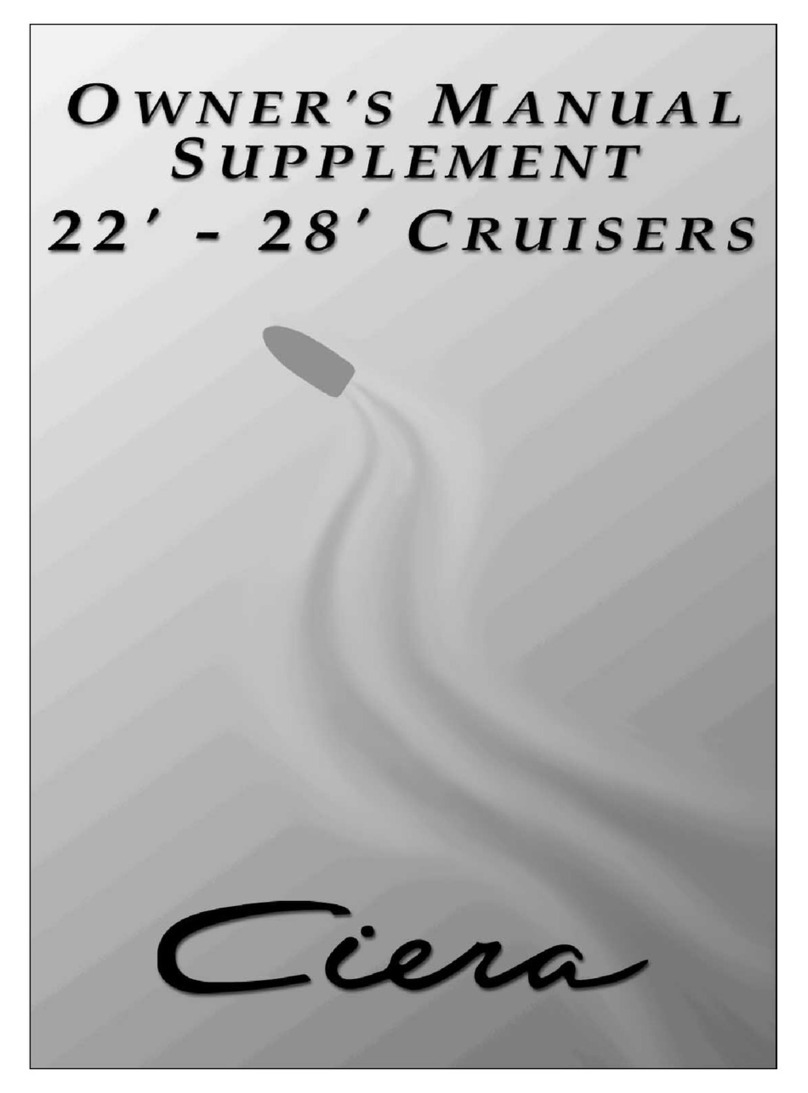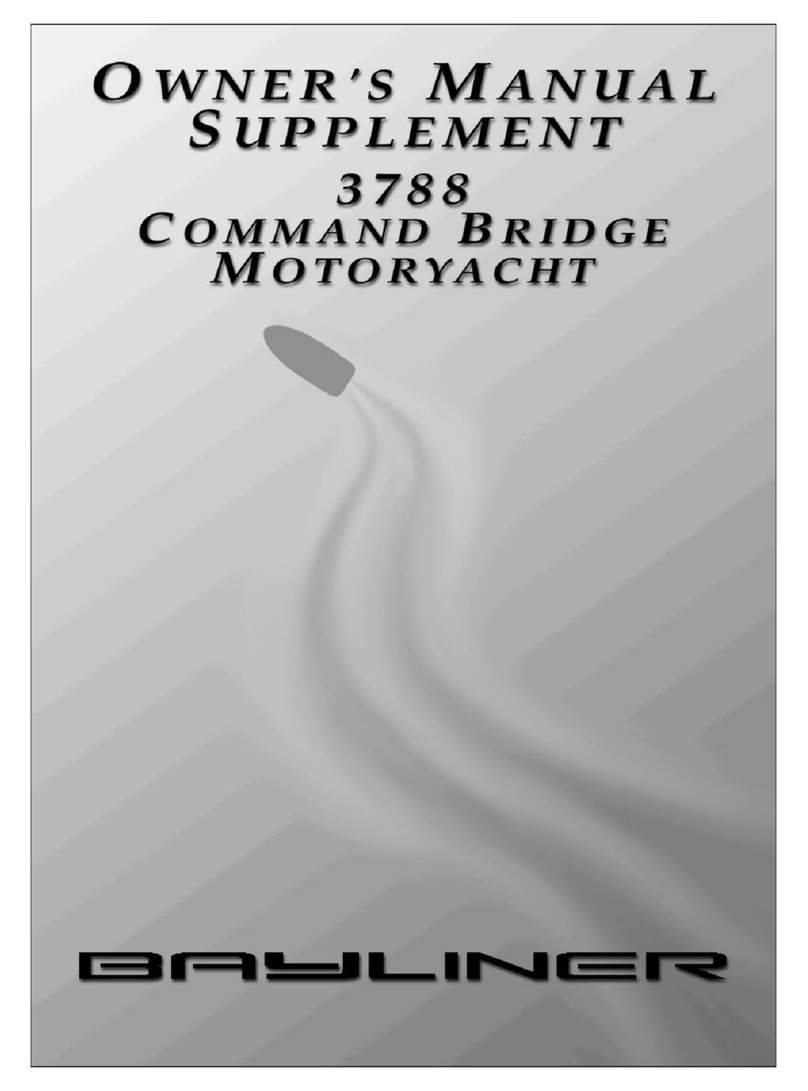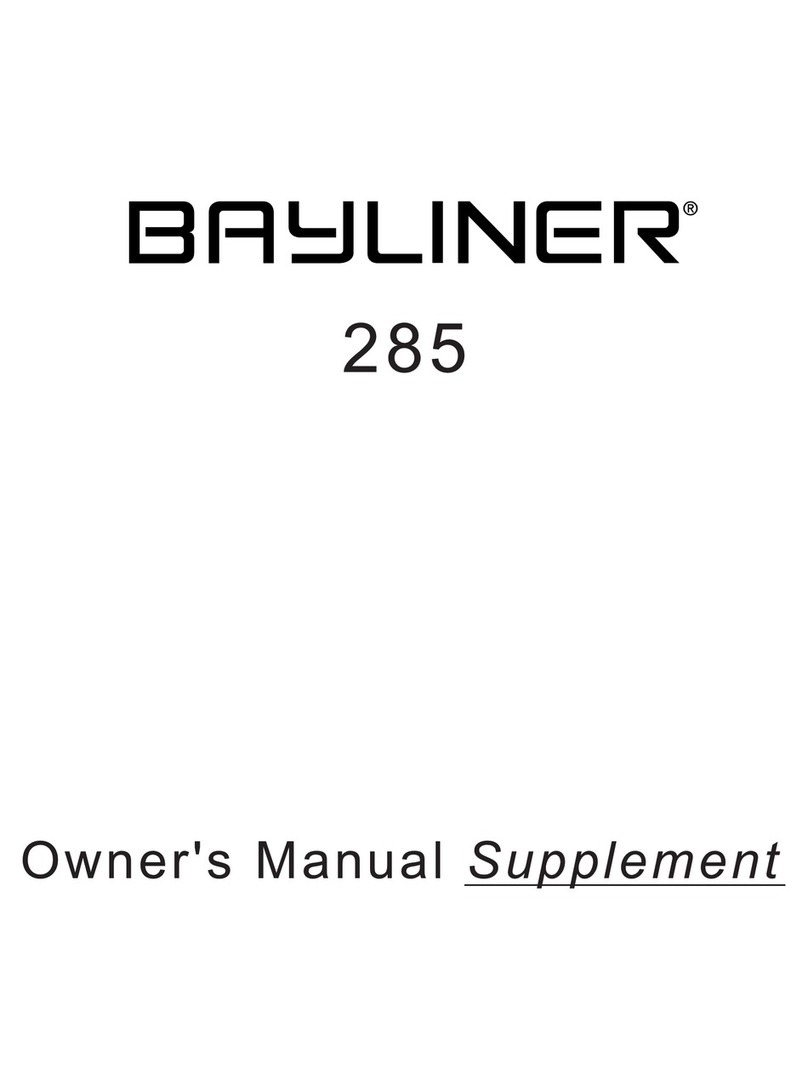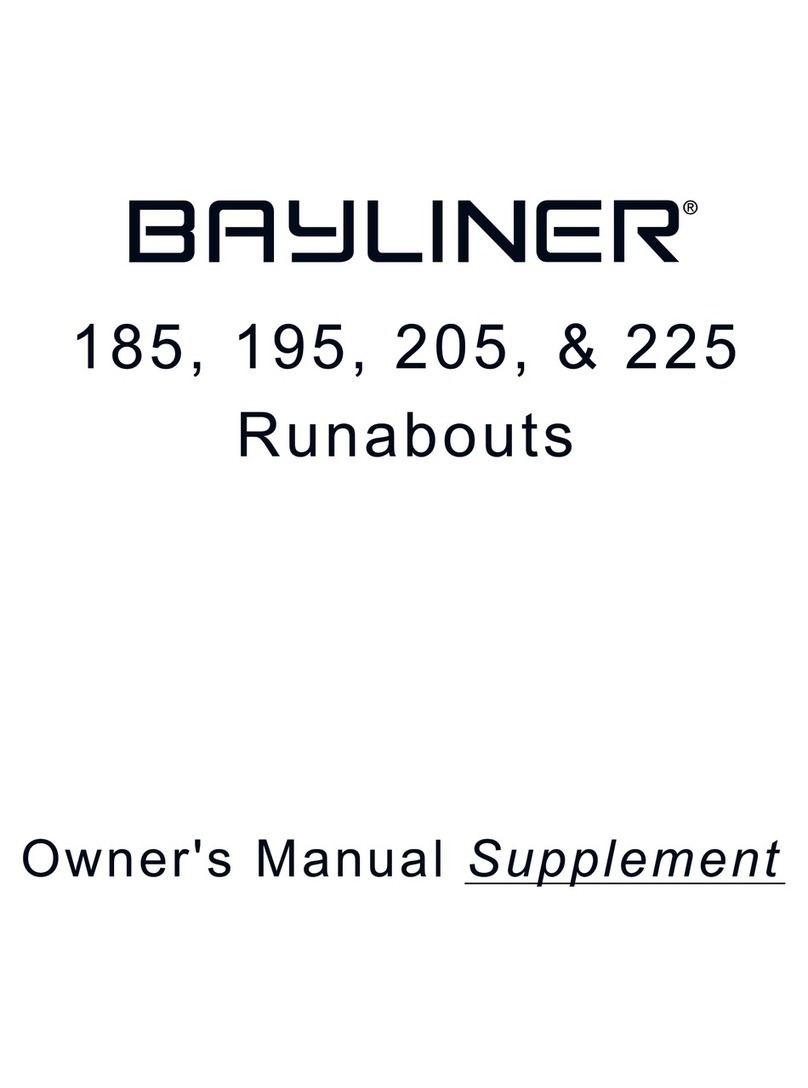PREPARATION
Priorto leaving on your first outing (or, for that matter, any outing)
there are certain itemsto check and activities to perform. Familiarize
yourself with your boat while dockside, and consider the following:
Recommendations for Safety
1. Personal Flotation Devices:
One Coast Guard approved personal flotation device (PFD) of
suitable size is required for each person aboard a recreational boat.
New PFDs bearing Coast Guard approval are now identified as
Types I, II, III, or IV.
Requirements for boats sixteen feet (16' ) or over in length: One (1)
Type I, II,or III(wearable) PFDfor each person on board, and one (1)
Type IV(throwable) PFD in each boat.
2. Always have children wear PFDs. Always check those devices
intended for young children for fit and performance in the water.
Never hesitateto have "all hands" wear lifesaving devices whenever
circumstances cause the slightest doubt about safety.
3. Do not overload or improperly load your boat. Maintain adequate
freeboard at all times. Consider the sea conditions, the duration of
the trip, the weather and the experience of the personnel on board.
Do not permit persons to ride on parts of the boat that were not
designed for such use. Sitting up on seat backs, bow riding, gun-
wale riding, or lounging on forward sundeck cushions while under-
way can be especially hazardous.
4. Falls arethe greatest cause of injury both afloat and ashore. Elimi-
nate tripping hazardswhere possible, make conspicuous those that
must remain, and require that all persons on board wear proper
footwear.
5. Understandthe meaning ofthe buoys, and never moor to one. (It is
a Federal offense.)
6. Know the various distress signals. A recognized distress signal used
on small boats isto slowly and repeatedly raise and lower the arms
outstretched to each side.
7. Storm signals are for your information and safety. Learn them and
be guided accordingly.
4
,
1I
If,
8. A special flag (red flag with white diagonal stripe) flown from a boat
or buoy means skin diving operations. Approach with caution and
stay clear by at least 25 yards.
9. Be especially careful when operating in any area where there might
be swimmers.
10. Watch your wake. It might capsize a small craft. You are respon-
sible for damage caused by your wake. Pass through anchorages at
a minimum speed.
.' 11. Learn and abide by common boating "rules of the road".
12. Always have up-to-date charts of your cruising area on board.
13. Keep an alert lookout. Serious accidents have resulted from failure
in this respect.
14. Always instruct at least one person on board in the rudiments of boat
handling in case you are disabled or fall overboard.
15. Consider what action you would take under various emergency
conditions such as a person overboard, fog, fire, a damaged hull or
other bad leaks, motor breakdown, severe storm or collision.
16. If you ever capsize, remember that if the boat continues to float it is
usually best to remain with it. You are more easily located by a
search plane or boat.
17. Keep firefighting and lifesaving equipment in good condition and
readily available at all times.
(
18. Do not test fire extinguishers by squirting small amounts of the
agent. The extinguisher might not work when needed. Always
follow approved instructions when checking fire extinguishers.
19. Have an adequate anchor and sufficient line (at least six times depth
of water) to assure a secure hold in all types of weather and sea
conditions.
20. Boat hooks are valuable when docking or when needed to retrieve
objects that have fallen overboard.
5








